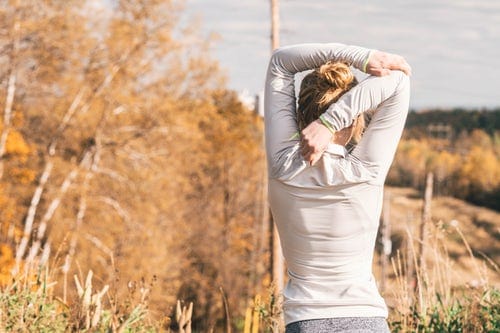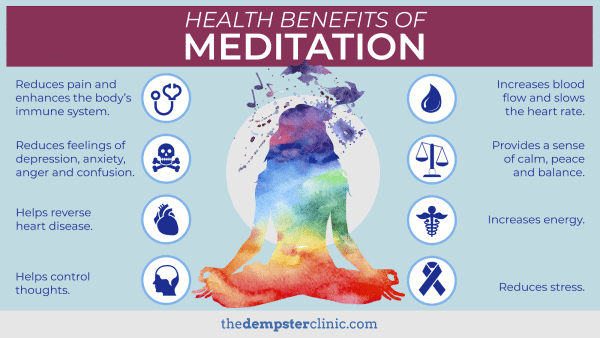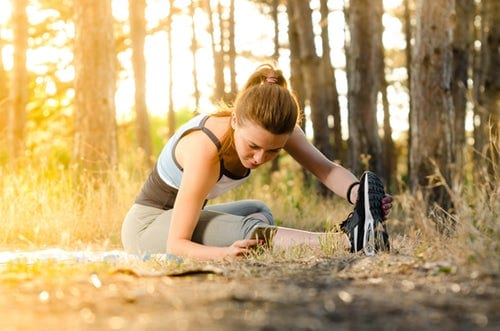Are you sick of living with an aching back? Is it a struggle to get yourself out of bed each morning? Then it sounds like your body might benefit from a regular stretching routine.
Stretching is the process of deliberately lengthening your muscles to increase their flexibility and range of motion. Regular stretching can warm your body up to exercise, reduce your risk of injury, improve your posture and even help you cultivate a more positive outlook. What does it take to set up a stretching routine that helps you? Let’s dive into the details of the top benefits of stretching.
Top Five Benefits of Stretching
There’s a lot to like about implementing a regular stretching routine. Some of the most significant health benefits are as follows.
1. Increase Flexibility and Range of Motion
Committing to a stretching routine improves flexibility, which is critical for maintaining your overall health. Living with a limited range of motion increases your risk of injuries and makes it difficult to perform everyday activities like bending over to grab something from the ground, climbing over a barrier, or other activities that require you to move in unfamiliar ways.
While research shows that regularly performing both static and dynamic stretching will improve your range of motion, safely stretching each muscle to the limit in a process called proprioceptive neuromuscular facilitation (PNF)-type stretching might be most beneficial for mobility. Ensuring that you can move each joint through its entire range of motion can help delay your joints from becoming stiff with age and unable to function correctly.

2. Improves Physical Performance
Whether you’re a committed athlete or merely trying to beat your best time in the community 5k, taking time to stretch before training may improve your physical performance. Performing dynamic stretches before exercise is a proven way to prepare your muscles for activity, as it improves your circulation and increases the blood flow to each muscle. This speeds up recovery time and reduces muscle soreness, ensuring that you can recover more quickly and push yourself further during each subsequent workout.
In some instance, you might want to skip exercise before intense bursts of activity like sprinting or a competition. Research shows that pre-event stretching might potentially hurt your performance in specific events, as it can weaken your hamstrings or prematurely fatigue you. Some athletes stretch before practice but refrain in the moments before a competition to ensure that their muscles are as fresh as possible when they need them.
3. Improves Your Posture and Reduces Back Pain

Chronic back pain is reaching crisis levels in Canada, where it affects an estimated 50 percent of the population. One cause of this pain along your spine are tight muscles that decrease your range of motion. A tense back is more likely to become strained and injured, so regular stretching will reduce your risk of developing problems later on. Likewise, stretching can help heal existing back problems by improving the strength and resilience of your back muscles.
Regular stretching can also improve your posture. Muscle imbalances in your back often trigger poor posture, but studies have shown that stretching and strengthening the specific muscles that are causing you problems can encourage proper alignment along your spine- improving your physical stance in the process.
4. Leads to Stress Relief
Are you sick of dealing with stress on a daily basis? You’re not alone. 30 percent of us Canadians report feeling intense stress regularly, and all that tension can manifest itself as physical pain. That’s because stress causes you to tense up your muscles, especially in the neck, shoulders, and upper back. Too much muscle tightness from stress can also lead to tension headaches, which can severely impact your quality of life.
A daily stretching routine can relieve tightness, and it can also address the cause of the tension in the first place. In fact, a soothing stretching routine like yoga can calm and relax your mind, which helps you feel more relaxed for the remainder of your day. For a more significant benefit, consider incorporating breathing exercises or a meditation practice into your stretching routine so that your mind and lungs come away as refreshed as your muscles.

Another advantage of stretching? It can shake you out of the midday doldrums. If you’re sick of feeling exhausted by the afternoon each day, take ten minutes to stretch at your desk, and you’ll push away your fatigue and boost your morale for tackling the day’s challenges.
5. Better Coordination
Do you feel like you are forever tripping over your own feet? Is it challenging to catch objects that friends toss your way? Your coordination might benefit from some regular stretching. Maintaining a full range of motion through your joints can lead to a better range of motion, which improves your balance. This makes you more mobile and reduces your risk of falls and other physical injuries, especially as you age.
How Should You Stretch?
What’s the best way to loosen up? A stretching routine isn’t quite as simple as touching your toes, but it doesn’t have to be complicated either. Generally, there are two main categories of stretching that can be beneficial. Each one offers different benefits, so the best idea is to use whatever method makes sense for your body’s needs.

Dynamic Stretching: This method relies on active movements that stretch your muscles without you holding the pose. Dynamic stretching is best done before exercise because it prepares the muscles for action.
Static Stretching: Static stretching requires you to hold a stationary stretching position for a longer duration, usually between 10 and 30 seconds. This technique is best for after exercise to restore muscles and prevent soreness.
Top Tips for a Proper Stretching Technique
When you start a stretching routine for the first time, it’s essential to practice a little restraint. Don’t immediately dive into an hour-long intermediate yoga routine as you risk injuring yourself. A better strategy is to take things slowly so that your body can adjust. Below are some of my tips for ensuring that you get the maximum benefit from stretching without increasing your risk of injury.
Warm Up First: Starting an intense stretch when your muscles are cold can lead to pulls and tears, so ensure that you’re warmed up before you begin. A few minutes of low-intensity biking, walking while pumping your arms, or completing a few sets of jumping jacks before you start will reduce your risk of injury. Some people find that they get the most significant benefit from only stretching AFTER their workout, rather than before.
Establish a Routine: The best stretching routine is the one you’ll stick with, so it’s essential to develop a daily routine that you can commit to. Your technique should vary depending on whether you plan to exercise that day. On days you plan to work out, aim for between 5 and 10 minutes of dynamic stretching before, and 5 to 10 minutes of static stretching afterward. For days without a workout, perform a gentle stretching routine like yoga or Pilates to keep things limber and avoid any tightness.
Don’t bounce: It might be tempting to pulse in the middle of a stretch to push your muscles further than ever, but this action can lead to microtears in the muscles, which can turn to scar tissue after it heals. Scar tissue like this is bad news, as it tightens your muscles even further, reduces flexibility, and can trigger pain. A better option is to slowly sink into each stretch to the point of comfort and hold each pose for up to a minute at a time.
Avoid Sharp Pain: When it comes to stretching, sudden, sharp pain is no good. In fact, it’s commonly a sign that you’ve gone too far and are putting yourself at risk of injury. Instead, stretch only to the point of mild discomfort and ease back if the feeling becomes too intense.
Breathe Through the Stretch: Holding your breath while stretching prevents oxygen from reaching your muscles which can impair your progress. It’s better to breathe deeply through each move to ensure your cells get the sustenance they need.
Stretch Both Sides Equally: When it comes to injuries, stretching half your body more than the other half can be just as dangerous as not stretching at all. Ensure that you stretch both sides equally by setting a timer for each side so that you don’t accidentally skimp on your routine.

Keep up with your stretching: It might feel time consuming to schedule in stretching for each day, but the benefits only last if you commit to stretching regularly. Your range of motion will revert back to what it was before if you slack on your stretching, so make it a habit to practice each day.
Practice Proper Technique: You might start stretching to improve your health, but without the right form you can cause lasting damage to your joints and muscles. It’s best to practice the proper technique for each move so that you don’t overextend any joint or put unnecessary strain on your knees or elbows. I recommend learning the proper stretching techniques from an expert before starting your practice in order to reduce the risk of injury.
Focus on Your Major Muscles: To get the maximum impact from your stretching routine, focus your efforts on the major muscle groups in your body: the calves, thighs, hips, neck, shoulders, and lower back. Stretch both sides equally to reduce the risk of injury.
Tailor Stretches to Your Sport: The evidence shows that it’s best to tailor your stretching efforts to the muscles you most want to aid. This can vary depending on the sport or activity you want to improve. For instance, soccer players should focus on their hamstrings to enhance their leg’s range of motion.
Who Should Avoid Stretching?
While stretching can offer impressive benefits for your health, not everyone will benefit from the practice. Certain conditions can be made worse from stretching, including acute muscle strains, fractured bones, joint sprains, chronic injuries, or other physical limitations. If you believe that you have a pre-existing health condition that might be harmed by stretching, it’s best to book an appointment with a functional medicine practitioner to get their consent before beginning a routine.
Better Wellness at The Dempster Clinic- Center for Functional Medicine
Starting your own stretching routine can be overwhelming if you don’t have expert guidance to get you started. At The Dempster Clinic- Center for Functional Medicine, I can work with you to develop a good stretching form to help you improve your flexibility and prevent injuries.
I am pleased to offer a Complimentary 15-minute Discovery Session for all potential patients. This session can take place over the phone or at the clinic in person. It provides an opportunity for you to learn more about the services I offer and how they can be of benefit to you.
Please schedule an appointment today! Your best health awaits.
Dr. John Dempster, ND
The Dempster Clinic- Center for Functional Medicine


